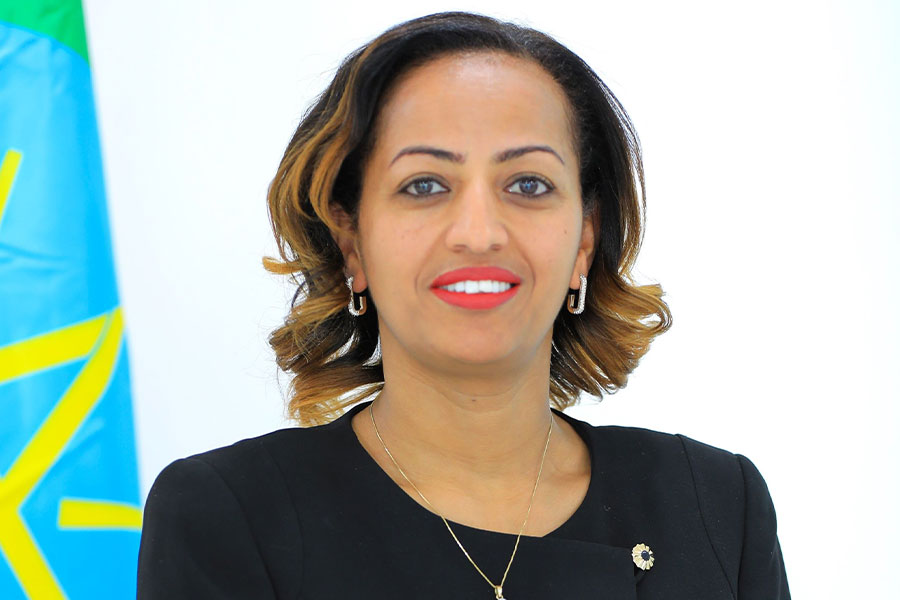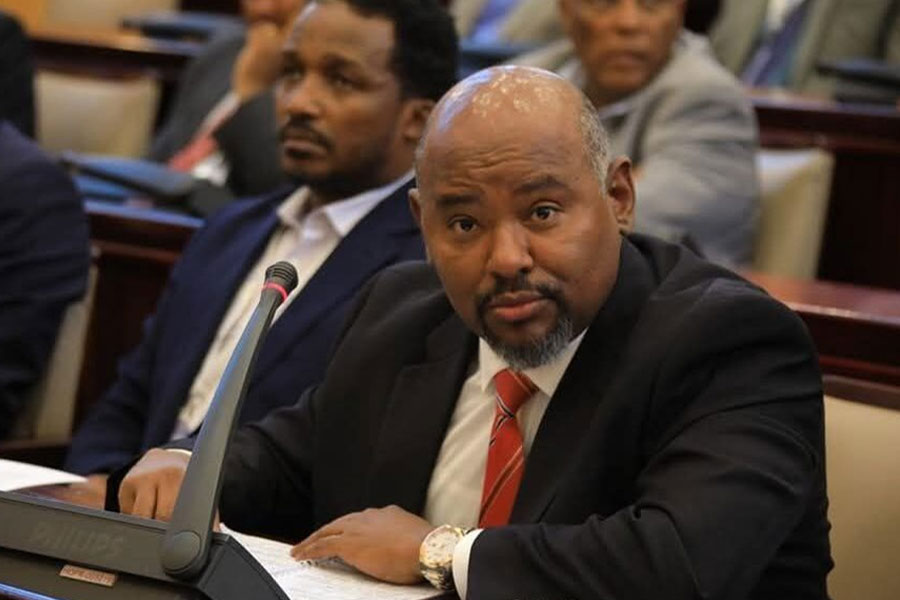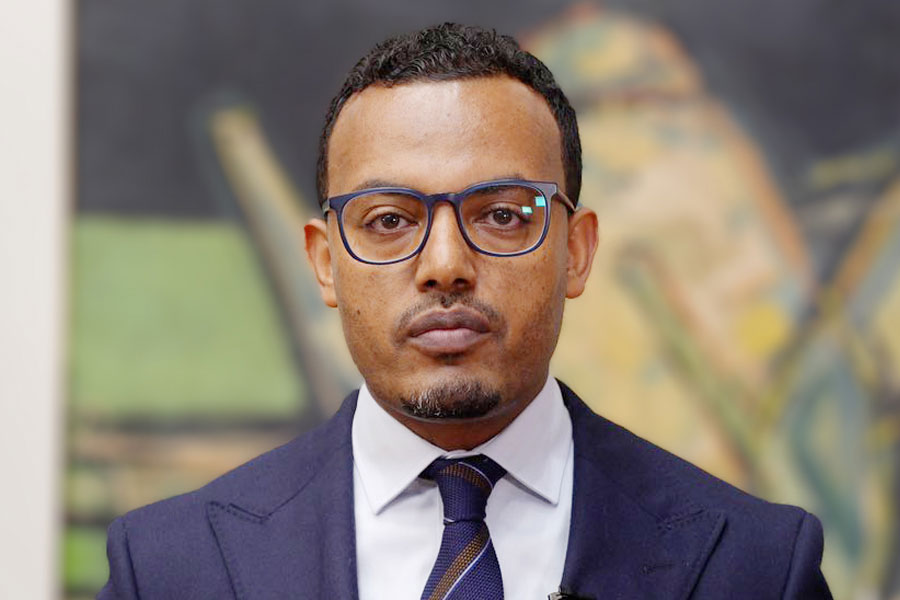Federal legislators passed a controversial tax bill this month, mandating new contributions from employees and businesses to the Ethiopian Disaster Risk Response Fund (EDRRF). The bill plans to fill a financial gap left by the suspension of USAID funding, previously an important source for humanitarian and development programs across the country.
The newly approved law empowers the Federal Disaster Risk Management Commission (FDRMC) to impose additional service charges on financial service providers, targeting loans, digital transactions, insurance premiums, and shareholder dividends. Additional revenue will be generated from fees and taxes on a broad range of goods and services including airline tickets, telecom services, passport and visa services, and business permits.
One of the most controversial provisions of the proposed law is the mandatory requirement for public servants and private sector employees to contribute a portion of their monthly salaries to the fund. Curiously, the deduction will be applied to net salaries, substantially increasing the financial burden of fixed-income workers who are already struggling with ever-growing living costs. Despite its far-reaching impact on the lives of millions, the bills was hastily discussed in Parliament before being unanimously referred to the House’s Standing Committee on Foreign Relations & Peace Affairs for approval.
With a population exceeding 100 million, Ethiopia had been the largest recipient of American aid in sub-Saharan Africa, receiving 2.3 billion dollars from USAID in 2022/23, and more than nine billion dollars from 2014 through 2023. However, most of these programs have now been suspended, placing USAID staff on administrative leave and disrupting essential services such as healthcare, employment initiatives, and refugee support.
The Ethiopian government insists the new taxes and fees are essential to maintain critical services. Yet the law faces significant opposition from employees who already strained by economic difficulties.
The salaried have long endured economic pressures from high taxation and inflation. Current income tax rates can reach up to 35pc, with an additional seven percent pension contribution deducted. The consumer price index for February this year was reported to be 15.5pc, the lowest in five years. Yet, the International Monetary Fund (IMF) predicts inflation will spike to approximately 29pc later this year.
In effect, employees end up giving up nearly half of their gross income to taxes and pension contributions, while the purchasing power of the remaining portion is effectively halved every two years due to inflation. These developments are contributing to a rapid and unprecedented rise in poverty among fixed income earners.
Many Ethiopians have drawn comparisons to a biblical story in which the Israelites pleaded for relief but instead faced harsher treatment. King Rehoboam responded, “My father laid heavy burdens on you, but I’m going to make them even heavier!” A dark joke circulates among Ethiopians who suggest the government simply take their entire salary and return only the taxed portion, as it represents more than half of their earnings.
Similarly, Ethiopians today feel increasingly burdened by mounting financial obligations imposed by their government.
Inflation’s real-life impact is undeniable. The cost of essential goods, particularly food and housing, has skyrocketed, making essentials unaffordable for many families. Employees earn much lower wages than their peers in other African countries, and recent currency devaluation has further weakened their purchasing power.
Ethiopia’s tax regime is also more burdensome to citizens than in many other countries. For instance,
Ethiopia taxes monthly incomes over 4.65 dollars, with a 35pc rate applied to earnings above 84.50 dollars. Kenya exempts income up to 186 dollars, applying a maximum 32.5pc tax at 2,318 dollars; Uganda exempts 63 dollars and taxes incomes over 2,720 dollars at 30pc. From Tanzania to Rwanda, the story is more or less similar. Djibouti’s taxation begins at a modest two percent for earnings up to 169 dollars, with the highest 45pc rate reserved for incomes exceeding 11,236 dollars.
Such figures illustrate that the salaried in Ethiopia carry a heavy burden relative to their regional peers.
Since 2019, Ethiopia has experienced consequential economic instability. At the beginning of Prime Minister Abiy Ahmed’s (PhD) administration, the Birr was valued around 30 Br against the US Dollar. Following economic shocks from the COVID-19 pandemic, global inflation, and internal conflicts, the currency steadily depreciated, reaching 57 Br by July 2024.
Federal authorities secured a 3.4 billion dollar IMF loan accompanied by stringent economic reforms, including removing subsidies on essential goods, adopting fiscal austerity, privatising state enterprises, and shifting from a fixed to a floated exchange rate regime. The outcome of these measures is that Birr lost its value drastically, and it is now exchanged for a 130 Br buying rate for the banks. The gap between the official and parallel market, the very policy objective of floating the exchange regime, has widened.
The rapid depreciation has caused living costs to skyrocket despite policymakers’ attempts to mitigate the impact with selective wage increases. Inflation continues to outpace these efforts, leaving middle—and lower-class Ethiopians struggling financially.
The removal of fuel subsidies, encouraged by the IMF to ease fiscal pressures, led to immediate fuel price increases. On March 23, the federal government again raised fuel prices overnight, marking the second increase in two months, with gasoline prices rising by 11pc and diesel by nine percent. These hikes will likely cause further price surges across the transportation, logistics, agriculture, and manufacturing sectors, compounding inflation.
The federal government used to cover 67pc of fuel costs through subsidies, but the authorities plan to eliminate these within a year. This could raise petrol prices from 112 Br a liter to over 300 Br, exacerbating economic hardship. Electricity tariffs will soon increase quarterly to recover operational and debt service costs by 2028, further squeezing low-income citizens.
Despite these economic headwinds, the federal government continues to prioritise military expenditure to deal with internal conflicts in the Amhara and Oromia regional states. The federal government recently increased defense spending by 23pc, allocating 65.7 billion Br this year alone. These expenditures divert critical funds from essential social sectors like education and healthcare, which receive much lower allocations: 79.8 billion Br for education and 33.9 billion Br for health.
Urban infrastructure and beautification projects have also received substantial budget allocations — 104 billion Br — despite concerns about limited economic returns during times of hardship. These spending priorities have prompted criticism that the federal government remains focused on projects that offer limited relief to average citizens. Public investments in luxury resorts across various regions remain largely unused by tourists due to security issues and lack of affordability. Funds for these projects could have yielded better returns if they had been redirected toward initiatives promoting job creation and poverty alleviation.
While conflicts and political instability are ongoing, the ambitious target set by Central Bank Governor Mamo Mihretu to lower inflation below 10pc appears increasingly unattainable. Economic recovery depends mainly on restoring internal peace. Resolving conflicts could improve economic conditions by stabilising prices and attracting much-needed foreign investment.
However, inadequate transparency and insufficient public engagement on the new tax law are evident. Civic organisations such as the Confederation of Ethiopian Trade Unions (CETU) and the Employers’ Federation were not consulted before the swift legislative process.
So, what should be done/call to action
One, the government should substantially cut military spending.
Two, the government should abort all urban beatification projects
Three, the government should be transparent and accountable to the public in making financial and economic policies.
Alternative measures could include boosting domestic productivity and enhancing tax collection efficiency instead of further burdening employees. Revising outdated income tax brackets could offer immediate relief to workers struggling with essential expenses. The current tax brackets, unchanged for 17 years, no longer reflect the economic reality. For instance, the tax-exempt income of 600 Br barely covers a single meal today, compared to previously covering a month’s rent.
Policymakers should consider raising the tax exemption threshold to at least 50 dollars monthly and increasing the daily per diem tax exemption from 600 Br to 1,500 Br to address rising costs. Adjustments are needed to exempt fuel expenses up to 10,000 Br monthly and allow a non-taxable transportation allowance of 3,000 Br to assist workers commuting daily.









 Loading your updates...
Loading your updates...